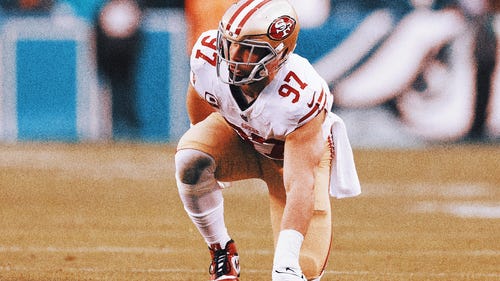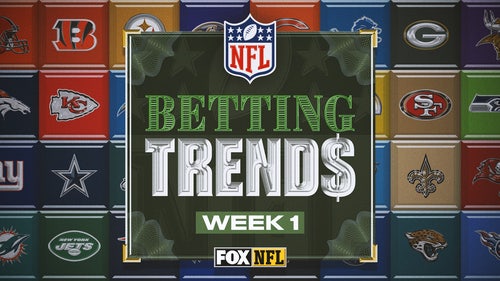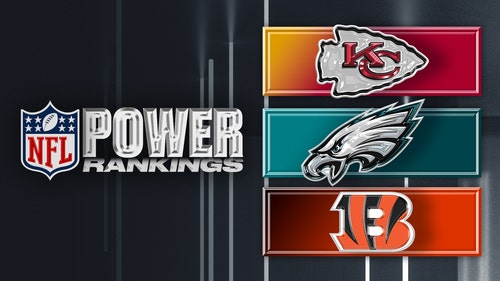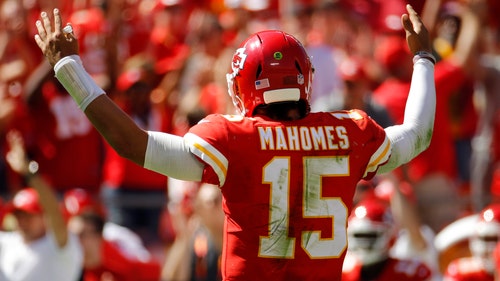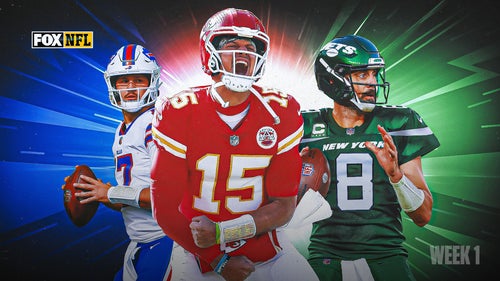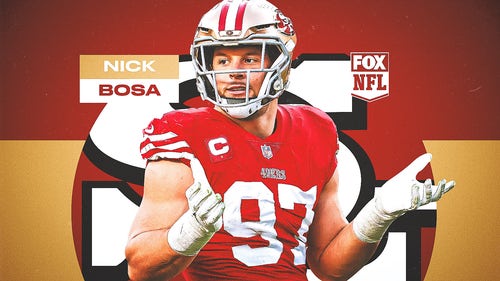Carl Smith has occupied a front-row seat for a large chunk of Pete Carroll’s coaching career.
The longtime quarterback guru currently serves as the associate head coach for the Seattle Seahawks, his second stint with the team. He has also been with Carroll in stops at North Carolina State (1982), New England (1997-1999) and USC (2004).
Smith said one thing has not changed over their four decades of friendship: Carroll is always asking questions.
“Curiosity was one of my first impressions of him,” said Smith, who’s affectionately known as “Tater.” “I didn’t really know him that first year at NC State. We had a three-hour recruiting trip together. I had just finished a season where I was the offensive coordinator and offensive line coach. And I had a connection with one of the great offensive line coaches in the NFL in Dan Radakovich.
“So, we’re on this trip and he [Carroll] couldn’t stop asking questions about line play. He’s always been curious about lots of stuff, but football for sure.”
That constant questioning and tweaking of his overarching philosophy — and having fun while doing it — has led to a lot of success for Carroll, who enters his 50th year of coaching when the Seahawks host the Los Angeles Rams on Sunday in the season opener for both teams (4:25 p.m. ET on FOX).
Since Carroll joined Seattle as head coach in January 2010, the Seahawks have won five NFC West titles and have reached the playoffs in 10 of 13 seasons. Seattle has never missed the postseason in back-to-back years under Carroll. And he has won at least nine games in 10 of the past 11 seasons, including back-to-back Super Bowl appearances in 2013 and 2014 — winning it all after the 2013 season.
Carroll has an overall record of 161-112-1 in the regular season and 11-11 in the postseason in 17 years as an NFL head coach. His 172 combined wins rank 16th in league history.
Before his time in Seattle, Carroll created one of the dominant programs in college football at USC, where he won two national titles and seven Pac-10 championships in nine seasons with the Trojans.

Carroll’s tenure at USC included a 34-game winning streak and back-to-back national championships in 2003 and 2004. (Photo by David Madison/Getty Images)
At the heart of all his success, in college and the NFL, has been a focused approach to help his players reach their full potential.
“That process for me has never stopped,” Carroll said in an exclusive interview with FOX Sports. “Figure out more accurately and more clearly what’s important to you. And then you can convey that to the people around you so they can utilize it. And we can all be connected and execute at a really high level. That’s the essence of it.
“And meanwhile, if you do it in a manner that people know you care for them, and it’s really important that you take care of the relationships you have with your players and coaches, that’s all a huge part of doing this.”
Carroll’s entry into coaching came in 1973 as a graduate assistant at his alma mater, the University of the Pacific. A high-energy defensive back during his playing days, Carroll gleaned nuggets from some of the best coaching minds along his journey, including a stop at Arkansas in the 1970s with head coach Lou Holtz and defensive coordinator Monte Kiffin, a longtime friend and mentor.
Carroll also served as defensive backs coach for the legendary Bud Grant in the 1980s with the Minnesota Vikings and rubbed elbows with Hall of Famer Bill Walsh during his time coaching defense for his hometown team, the San Francisco 49ers.
Carroll said he would take bits and pieces from each stop and incorporate them into his own coaching philosophy.
“When I went to Arkansas, that’s when I knew I wanted to be a coach,” he said. “I got the bug. It was huge and fun. It was big-time football for the first time, and I was drawn into it and ready to roll. From then, it was just having fun coaching. And here we are.”
And what did he learn from Holtz?
“He was amazing,” Carroll said. “He was so smart, so calculating and strategic. So entertaining and so well-versed. He was really an amazing guy to be around early on.”
During his time at Arkansas, Carroll worked as a graduate assistant on defense for Kiffin. Carroll said he picked up many of his core defensive principles that he still utilizes to this day from the originator of the Tampa 2.
He also learned something fundamental about coaching from Kiffin — to be clear, concise and consistent.
“He had a real simple statement: Either you have a philosophy or you don’t,” Carroll said about Kiffin. “If you change it from year to year, you don’t have one. And it wasn’t very in-depth or too highfalutin. It was just basic football stuff. But he knew that you needed to know yourself.
“And you needed to know what you wanted to do and how you wanted it to go. He was very clear in that manner. And that’s really at the heart of all the philosophy and culture stuff that we have here. And it goes all the way back to Kiff giving me a start and that mentality.”

As a young coach, Carroll was heavily influenced by defensive guru Monte Kiffin. (Photo by Eric Espada/Getty Images)
Carroll would follow Kiffin to North Carolina State and to the NFL with Minnesota, where he worked for Grant, whom Carroll calls one of the most instinctual coaches he has ever been around.
“He was just an instinctive guy in general,” Carroll said about Grant. “He was a great hunter. He was a great athlete. He was a great coach. He was a great dad. Everything he did, he was at the top of it. Why he was that way, he was raised to be that way. He played four sports in high school. He did everything.”
Much like he did with Walsh during his time coaching with San Francisco, Carroll said he developed a good rapport with Grant, a relationship that lasted until Grant’s death earlier this year.
“Because I hadn’t grown up with those guys and coaching, they treated me differently,” Carroll said. “And I felt different with the relationship and felt comfortable visiting them. A lot of our guys were intimidated, especially by Bill Walsh. The coaches that had been with him were intimidated by him. They didn’t want to talk to him. They were afraid he was going to yell at them or something.
“And so, I fortunately had a really great opportunity with both Bud and Bill to hang out with those guys in the years that we were together. And it just meant so much because I dug in. I was asking the real questions and real stuff. It was just an amazing time for me and accelerated anything beyond my wildest dreams.”
It was during this time that Carroll started to embrace his affinity for longer, lankier cornerbacks, developing players like Richard Sherman and more recently Tariq Woolen into Pro Bowlers.
“I was first impressed when I was watching the 49ers practice against the Raiders one day in the summertime when I was NC State,” Carroll said. “On the practice field that day, Michael Haynes and Lester Hayes were there. And I watched Willie Brown coach those guys, and that’s where it started.
“The way that they coached their press stuff, their bump-and-run stuff. I couldn’t hear what they were saying, but I was taking notes. And I started coaching exactly the way I thought they were telling them.”
Carroll said the first lanky corner he had at NC State was 6-foot-2, 203-pound Perry Williams, who went to play 10 seasons for the New York Giants.
“I realized the length was so valuable, and the speed was connected to the style of racing from the line of scrimmage,” Carroll said. “And that kind of all started there. So, it was really one day of watching the Raiders practice and watching Willie Brown coach that inspired me.”
Carroll initially struggled as a head coach in the NFL, getting fired after short stints with the New York Jets and the New England Patriots in the 1990s. He took a year off from coaching for self-reflection and reinvention before getting the head-coaching job with USC in 2001.
And the rest is history.

Carroll lasted only a year in his first NFL head-coaching gig, going 6-10 with the Jets in 1994. (Photo by Al Pereira/Michael Ochs Archives/Getty Images)
A key to Carroll’s success upon his coaching reemergence was his acumen not only with cornerbacks but also with quarterbacks.
“We love to give all these offensive coaches credit for their quarterback doing well,” said former longtime Seahawks QB Matt Hasselbeck. “And sometimes when a defensive coach does a great job with a quarterback, we don’t give them any credit.
“I know playing for Pete, while there were some growing pains and things like that for me, there were some really good things that helped me a lot.”
A quarterback in high school, Carroll understands the complexity of the position.
“It’s such a hard job,” he said. “Anything you do to add on and make it more challenging just makes them function at a lower level. It’s all part of that type of thinking, and it’s the approach to the game and the way you make your team up.
“It’s why I always talk about the running game. Everybody thinks I’m a run nut. Well, that’s not it at all. It’s to make the game better for our quarterback, and to make our team better. It’s all about a philosophy and approach that connects with the QB position. I feel like I’m coaching the quarterback the whole time. I always do.”
Hasselbeck compared the transition —from Mike Holmgren in his early days in Seattle to Carroll — to eating with his left hand instead of his right.
“It shouldn’t be that hard,” joked Hasselbeck. “But for whatever reason, this feels really foreign.”
At the start of organized team activities during Carroll’s first year in Seattle, Hasselbeck said the new coach showed the returning players an epic highlight video showing all the great things the Seahawks had done over the history of the franchise, from the 1970s to the Holmgren years.
“He was like, ‘Hey, let’s celebrate. Right now, here it is,'” Hasselbeck said. “‘And now it’s over. We’re moving forward. I don’t want to talk about it. I don’t want to hear about it. This is a new regime.'”
Hasselbeck’s biggest challenge was Carroll’s mindset that it’s all about the ball.
“Just don’t turn the ball over and we win on offense,” Hasselbeck said. “But what he was really saying is on defense he needs us to change our mindsets, [that] we need to go get the football.
“For whatever reason, it just wasn’t hitting my brain and I really struggled with it. And I ended up turning the ball over more than I ever really turned the ball over. The only thing I can equate it to is when you’re playing in a scramble golf tournament and you’re putting. And someone says, ‘Just don’t leave it short.’ And what do you do? You leave it short.”
Hasselbeck tied a career-high with 17 interceptions in 2010. He eventually came to terms with Carroll’s ball philosophy and the Seahawks somehow made it into the playoffs at 7-9.
Hasselbeck threw an interception on the first play of the NFC wild-card game against the New Orleans Saints. He thought he was going to get pulled for Charlie Whitehurst, who had started the final game of the regular season against the Rams and helped lead the Seahawks to a win that got them into the postseason.
But Carroll stuck with Hasselbeck, who rewarded his head coach by going 22-of-35 for 272 yards and four touchdown passes. The Seahawks beat the defending Super Bowl champs 41-36.
“It took me almost the whole year, but within all of that Pete was great,” Hasselbeck said. “He doesn’t have a lot of rules and he lets you be you. I think that’s important.”

Carroll stuck with Matt Hasselbeck (right) in the 2010 playoffs after playing Charlie Whitehurst (left) in the regular-season finale. (Photo by Kevin C. Cox/Getty Images)
That win over the Saints is best remembered for the “Beast Quake” touchdown, a monumental 67-yard run by Marshawn Lynch that made the earth move.
“I remember when we traded for Marshawn,” Hasselbeck said. “He had a really tough NFL experience, and I think people were writing him off completely. And he’s not going to fit or conform to everybody’s situation.
“In that first meeting, [Carroll] does this cool thing when he kind of introduces everybody, and then kind of embarrasses them. It’s hilarious. It’s kind of an icebreaker. We’ve all been embarrassed, so it’s all good. So he kind of embarrassed Marshawn. It’s kind of a tough moment. It’s your first day, you get embarrassed. But then he’s like, ‘Listen, in all seriousness, I have wanted to coach you since you were at Oakland Tech. And I wanted to get you into USC, and I couldn’t. Well, guess what: This is the NFL, and now I can go get whoever I want. And I want you. And I don’t want you to be like anybody else. I want you to be that kid from Oakland Tech.'”
[Do you want more great stories delivered right to you? Here’s how you can create or log in to your FOX Sports account, follow your favorite leagues, teams and players and receive a personalized newsletter in your inbox daily.]
Carroll turns 72 on Sept. 15. He says the birthday throws are a thing of the past, though he recently put on a throwing display that went viral during training camp. He joked that the defense got its revenge in the next practice, intercepting him several times.
So in the end, what is Carroll’s secret sauce that has him still coaching into his 50th season?
“He’s uncommonly curious, and he’s thoughtful. Not just football, that’s just him as a person,” Smith said.
“He’s famously looking for the light, looking for the bright, looking for the fun, looking for how to make people better. That’s his connection with the players. And he’s constantly trying to have fun. He’s looking to enjoy life.”
Eric D. Williams has reported on the NFL for more than a decade, covering the Los Angeles Rams for Sports Illustrated, the Los Angeles Chargers for ESPN and the Seattle Seahawks for the Tacoma News Tribune. Follow him on Twitter at @eric_d_williams.
NFL trending
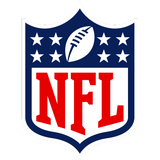
Get more from National Football League Follow your favorites to get information about games, news and more




